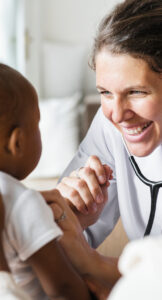 Training in the humanities empowers medical practitioners to better understand, relate to, and care for their patients.
Training in the humanities empowers medical practitioners to better understand, relate to, and care for their patients.
Lewis Miller, MPP
Assistant Director, HDO
July 17, 2014
When it comes down to it, health care is fundamentally about dealing with people.
At its core, successful health care outcomes rely on relationships: doctor-patient, nurse-patient, doctor-nurse, nurse-aid, etc. These relationships are arguably as critical as the reams of technical expertise and mechanical prowess required to carry out procedures, treatments, and tests. If any of these relationships break down, the level of care patients receive can suffer.
The humanities help us understand and relate to people – a crucial factor in building and maintaining relationships and, thus, in providing effective health care. Improving medical practitioners’ capacities to understand and relate to patients is one of the primary issues the emerging interdisciplinary field of medical humanities is attempting to address.
“To make a better doctor means to me — and I can’t speak for everyone — one who sees the person and not just the patient, not just an organ system that is screwed up,” said Dr. David Muller, Chairman of Medical Education at the Mount Sinai School of Medicine in a New York Times article: At Some Medical Schools, Humanities Join the Curriculum.
From literature and philosophy to ethics and history, the humanities offer a wealth of different perspectives to effectively supplement the medical field’s vast sums of scientific knowledge. Two recent pieces bring to light innovative examples of this science-humanities symbiosis.
Ilene Raymond Rush, writing for The Philadelphia Inquirer, highlights several programs, including one at Harvard University, in which medical students observe and/or create works of art with the goal of improving their observation and diagnostic abilities.
In an opinion piece for The New York Times, Joanna Bourke, a Professor of History at Birkbeck College, draws on a personal health care experience as a means of highlighting the power of storytelling and narrative as a way for patients to express their pain and for medical professionals to assess their situation:
“When Virginia Woolf lamented the difficulties in communicating pain, she was implicitly criticizing 20th-century medicine. In earlier periods, doctors regarded pain stories as crucial in enabling them to make an accurate diagnosis. But within a century, clinical attitudes had radically changed. Elaborate pain narratives became shameful, indicative of malingering, ‘bad patients.’”
The mission of HDO is to develop leaders prepared to tackle the human-related issues of the modern workplace, be it a financial firm, environmental nonprofit, military barracks, or an operating room. The cases above, and myriad others, demonstrate the multiple – and, sometimes unexpected – ways in which the humanities can be practically applied to the betterment of consumers, businesses, and society.
(See also “Health Careers for Humanities Scholars” at Inside Higher Ed)

